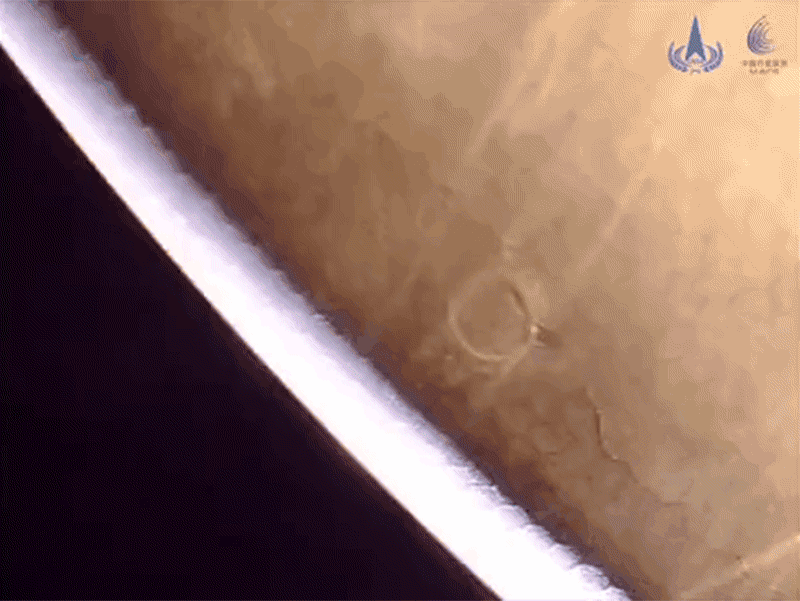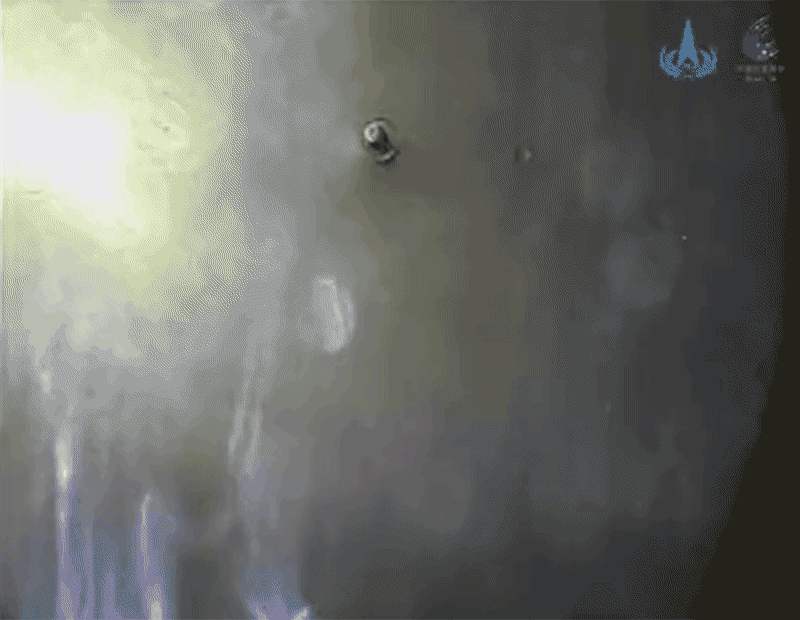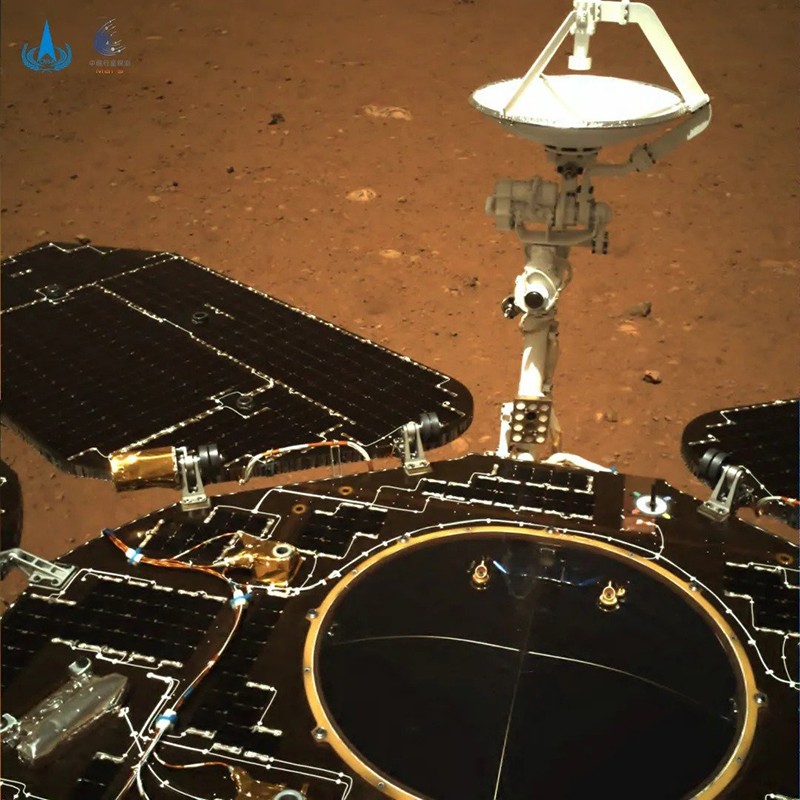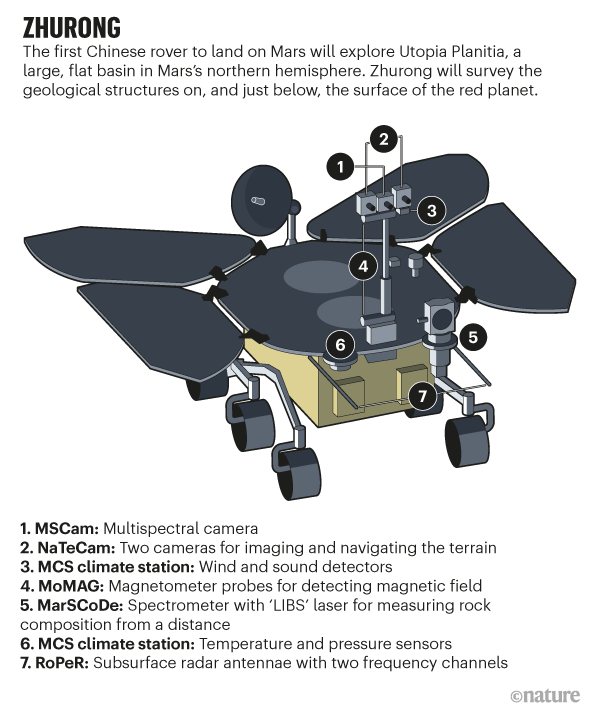The China National Space Administration (CNSA) has revealed the first images from Mars taken by its Zhurong rover, which arrived on the surface on Saturday. Scientists say that the shots — which show the rover with its solar panels unfurled and the ramp from its lander deployed — also hint that it has arrived at a safe and ideal site from which to begin its exploration.
“The first images show, first and foremost, a terrain that will be easy to drive over,” says Alfred McEwen, a planetary scientist at the University of Arizona in Tucson.
He and other space scientists say they are thrilled to see a flat landscape, which appears largely free of obstructions — such as craters, rocks and boulders — from which it can begin to explore, and potentially travel relatively long distances to features of interest seen in satellite imagery.
“We are very excited. But we are still waiting for more images with high resolution to come,” says Yuyan Zhao, a planetary geochemist at the Institute of Geochemistry, Chinese Academy of Sciences, in Guiyang.
Moments from Mars
On 19 May, four days after Zhurong’s arrival, the CNSA released two images snapped by cameras on the rover.
It also released two brief video clips, which captured the moment — more than 100 kilometres above the red planet’s surface — that the Tianwen-1 orbiter released the rover and lander, encased in a heat shield, ready to begin their descent through the Martian atmosphere.
A black-and-white image (top of page), taken from a forward-facing obstacle-avoidance camera with a wide-angle lens, shows a ramp descending from the landing platform, which Zhurong will likely roll off of within days. Two protruding rods are the rover’s subsurface radar instrument, for studying geological structures below the surface.
A second image, in colour (below), showing the view taken from a navigation camera pointing towards the rear of the rover, reveals a deployed antenna and solar panels in the shape of butterfly wings. Red Martian soil and dust cover the ground.
Scientifically exciting images
The photographs are “clearly world class quality and very exciting scientifically,” says Joseph Michalski, a planetary scientist at the University of Hong Kong. Researchers “will need a little time to dig into the details,” he adds. “But the images are enticing and encouraging.”
The flat landscape that can be seen is especially promising, scientists say, because it means Zhurong could reach features of geological interest that are several kilometres away. One landform of particular interest is a possible mud volcano, to the northeast.
“Maybe it actually can reach that pitted cone in 90 days,” says McEwen, which is the length of the rover’s initial mission goal. The small rocks seen in the new images have diverse shapes and seem to reflect light differently, which might be consistent with mud flows from a volcano, says McEwen. “But that is still very speculative,” he adds.
Elena Favaro, a planetary geomorphologist at The Open University, in Milton Keynes, United Kingdom, says that two bright patches in the top right of the black-and-white image could be ‘transverse aeolian ridges’, which are ripple-like structures of windblown deposits. It isn’t clear how far away they are, but she hopes Zhurong will head towards them to determine their makeup.
Zhurong’s mission is expected to last three months, but it could survive longer and tally up a considerable distance, as other solar-powered rovers have.
NASA’s Opportunity broke the record by travelling more than 45 kilometres over 15 years, until a massive dust storm cloaked its solar panels. The Chinese team hoped to guard against that fate by fitting Zhurong’s solar panels with a vibrating function to shake off dust that builds up.
"first" - Google News
May 20, 2021 at 12:08PM
https://ift.tt/3u3LgCr
China's Mars rover returns first images — scientists say the view is promising - Nature.com
"first" - Google News
https://ift.tt/2QqCv4E
https://ift.tt/3bWWEYd
Bagikan Berita Ini



















0 Response to "China's Mars rover returns first images — scientists say the view is promising - Nature.com"
Post a Comment